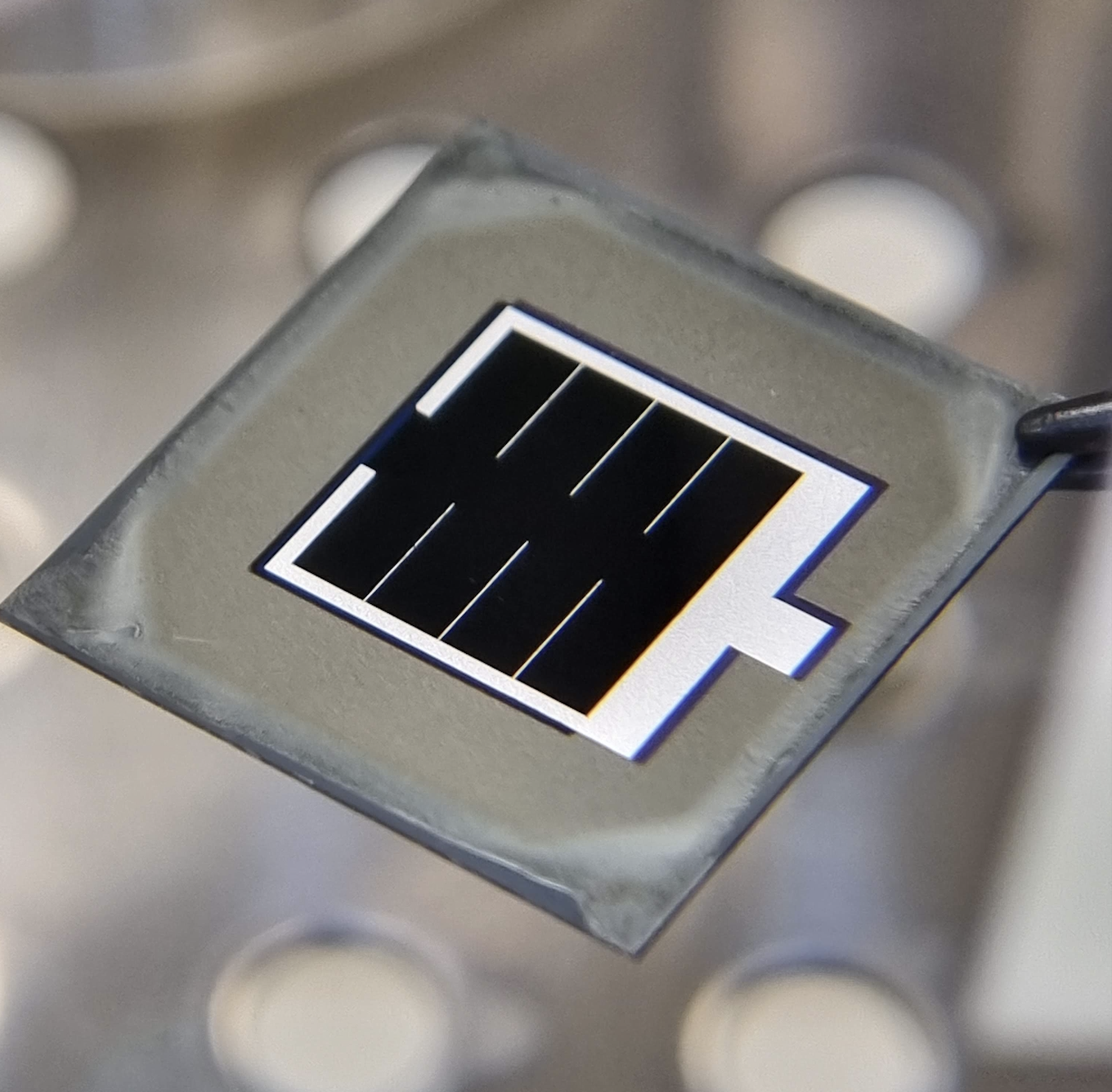Research Areas
Aydin Research Group at LMU Munich is focusing on the development of multijunction solar cells. Our group's primary focuses are (1) perovskite/silicon and (2) all-perovskite tandem solar cells, however, we are not bounded by these concepts.

Ultra-efficient perovskite-silicon tandem solar cells
Dual-junction perovskite-silicon tandem solar cells have surpassed the theoretical efficiency limits of single-junction devices, establishing themselves as a highly efficient photovoltaic platform. Our research plan focuses on investigating various tandem configurations, including two-terminal (2T) and four-terminal (4T) setups, as well as emerging concepts such as beyond dual-junction tandems (e.g., triple junctions) and bifacial tandems, all aimed at achieving high energy yield and enhanced stability.
Read more
Extraterrestrial Photovoltaics
Space photovoltaics involve the utilization of solar cells in outer space to generate electrical power. These photovoltaic systems are crucial for powering spacecraft and satellites, offering a reliable and sustainable energy source amidst the vastness of space. They play a vital role in enabling long-duration space missions, providing power for communication, navigation, scientific research, and various other functions essential for space exploration.
Read more
All perovskite tandem solar cells
All-perovskite tandem solar cells offer power conversion efficiencies comparable to perovskite–silicon tandems, with the added advantage of more cost-effective fabrication. Their lightweight, flexible, efficient, and radiation-tolerant nature makes them especially well-suited for space-based applications, particularly in low Earth orbit (LEO). However, their performance still lags behind that of perovskite–silicon tandems, and this gap must be addressed. Additionally, their operational stability requires further investigation, which is a key research focus within our team.
Read more
Molecular Contacts
Molecular contacts have driven a paradigm shift in high-efficiency perovskite solar cell development by minimizing interfacial losses and enhancing charge extraction. Despite enabling record PCEs, their effective coverage on oxide surfaces and long-term stability remain uncertain. Our group is developing novel strategies to address these critical limitations and improve performance.
Read more